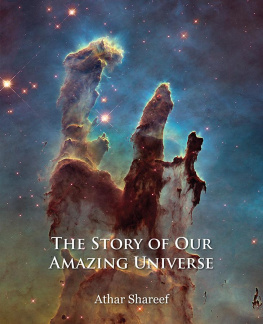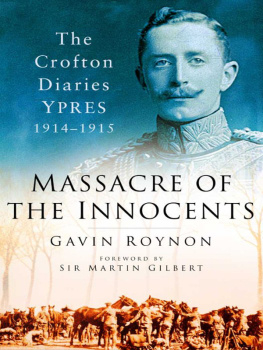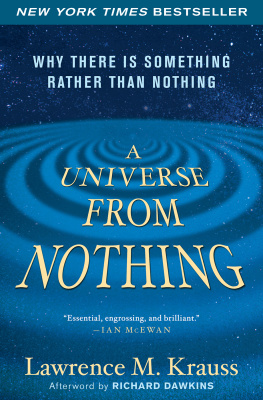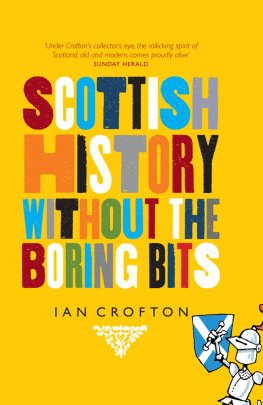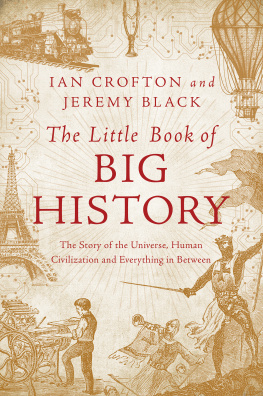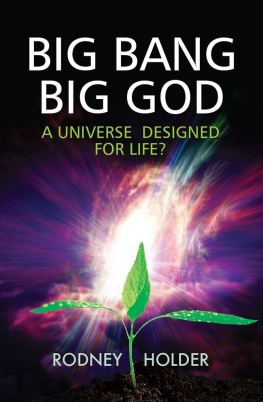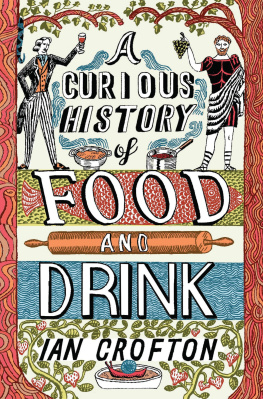Crofton Ian - The Little Book of Big History: The Story of Life, the Universe and Everything
Here you can read online Crofton Ian - The Little Book of Big History: The Story of Life, the Universe and Everything full text of the book (entire story) in english for free. Download pdf and epub, get meaning, cover and reviews about this ebook. year: 2016, publisher: Michael OMara, genre: Art. Description of the work, (preface) as well as reviews are available. Best literature library LitArk.com created for fans of good reading and offers a wide selection of genres:
Romance novel
Science fiction
Adventure
Detective
Science
History
Home and family
Prose
Art
Politics
Computer
Non-fiction
Religion
Business
Children
Humor
Choose a favorite category and find really read worthwhile books. Enjoy immersion in the world of imagination, feel the emotions of the characters or learn something new for yourself, make an fascinating discovery.

- Book:The Little Book of Big History: The Story of Life, the Universe and Everything
- Author:
- Publisher:Michael OMara
- Genre:
- Year:2016
- Rating:3 / 5
- Favourites:Add to favourites
- Your mark:
- 60
- 1
- 2
- 3
- 4
- 5
The Little Book of Big History: The Story of Life, the Universe and Everything: summary, description and annotation
We offer to read an annotation, description, summary or preface (depends on what the author of the book "The Little Book of Big History: The Story of Life, the Universe and Everything" wrote himself). If you haven't found the necessary information about the book — write in the comments, we will try to find it.
Crofton Ian: author's other books
Who wrote The Little Book of Big History: The Story of Life, the Universe and Everything? Find out the surname, the name of the author of the book and a list of all author's works by series.
The Little Book of Big History: The Story of Life, the Universe and Everything — read online for free the complete book (whole text) full work
Below is the text of the book, divided by pages. System saving the place of the last page read, allows you to conveniently read the book "The Little Book of Big History: The Story of Life, the Universe and Everything" online for free, without having to search again every time where you left off. Put a bookmark, and you can go to the page where you finished reading at any time.
Font size:
Interval:
Bookmark:
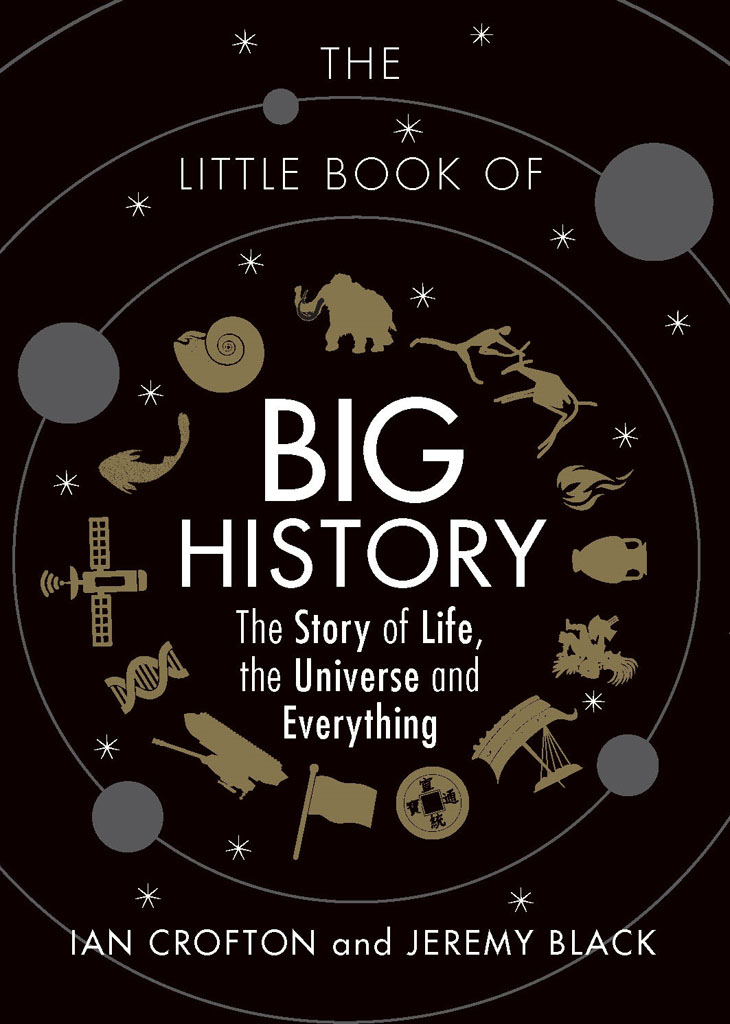

First published in Great Britain in 2016 by
Michael OMara Books Limited
9 Lion Yard
Tremadoc Road
London SW4 7NQ
Copyright Ian Crofton and Michael OMara Books Limited 2016
Ian Crofton and Jeremy Black have asserted their right to be identified as the authors of this work in accordance with the Copyright, Designs and Patents Act 1988.
All rights reserved. You may not copy, store, distribute, transmit, reproduce or otherwise make available this publication (or any part of it) in any form, or by any means (electronic, digital, optical, mechanical, photocopying, recording or otherwise), without the prior written permission of the publisher. Any person who does any unauthorized act in relation to this publication may be liable to criminal prosecution and civil claims for damages.
A CIP catalogue record for this book is available from the British Library.
ISBN: 978-1-78243-429-0 in hardback print format
ISBN: 978-1-78243-685-0 in paperback format
ISBN: 978-1-78243-430-6 in e-book format
Additional research: Claire Crofton and Chloe Evans
Jacket design by Ana Bjezancevic
Picture credits: Shutterstock
Designed and typeset by Design 23, London
www.mombooks.com
Note: Rather than the Christian BC and AD chronology, more recent dates in Earths history appear here as BCE and CE , before and after the start of the Common Era.
How did we get to where we are now? The back story to the chronicle of humanity is a long one. There would be no human history without a physical place for it to unfold. So to truly understand ourselves, we have to understand how the universe came into being, how the stars and planets formed, why our planet has the right conditions for life to have appeared. And we also need to understand how living things work, and how they evolved, and how we have ended up with us.
13.8 billion years ago: The Big Bang brings the universe into existence.
4.6 billion years ago: Formation of our solar system, including the Sun, the Earth and the other planets.
4.5 billion years ago: The Moon is formed, probably as a result of a collision between the Earth and a Mars-sized planet.
4.2 billion years ago: Oceans may have begun to form.
4.13.8 billion years ago: Earth and other inner planets suffer numerous impacts from asteroids.
4 billion years ago: Formation of oldest rocks still present on the Earth. Possible appearance in the oceans of self-replicating molecules, such as DNA.
3.7 billion years ago: Earliest indirect evidence of life on Earth suggests bacteria-like organisms feeding on organic molecules.
3.4 billion years ago: Cyanobacteria (blue-green algae) emerge, which draw energy from photosynthesis.
2.45 billion years ago: Start of the build-up of free oxygen in Earths atmosphere, as a by-product of photosynthesis.
Before the advent of modern science, there was a range of beliefs about the age of the Earth, and of the universe. Some Christians believed that God created both a mere 6,000 years ago. Ancient Hindu texts, in contrast, talk of an infinite cycle of creation and destruction.
Towards the end of the 18th century, geologists began to realize that the Earth must be much more ancient than had been thought (at least in Europe) perhaps millions if not billions of years old. However, into the 20th century the scientific consensus was that the universe itself was eternal, and in a steady state. Stars might be born and die, but the dimensions of the universe were fixed and unchanging.
A chink in this theory came in the 1920s when the American astronomer Edwin Hubble observed that the further away a galaxy is from us, the faster it is receding. He concluded that the universe is expanding, and that this expansion started in a single great explosion, which became known as the Big Bang.
Arguments persisted between the proponents of the steady state and those of the Big Bang. Then in 1964 two radio astronomers working in New Jersey, Arno Penzias and Robert Wilson, noticed that their sensitive microwave receiver was suffering from constant interference, the same in all directions, with a wavelength representing a temperature of 2.7 degrees above absolute zero. At first they thought the phenomenon might be caused by the proximity of New York City or by pigeons defecating on their instrument. Eventually they realized that what their receiver was picking up was an echo of the Big Bang. If you retune your radio, part of the white noise you hear between stations is this very same echo from the beginning of time.

The Big Bang
At this stage the only matter was elementary particles such as quarks and gluons. At about 10-6 seconds, as expansion slowed down and temperatures fell, quarks and gluons came together to form protons and neutrons. A few minutes later the temperature had cooled further, to about 1 billion degrees, and protons and neutrons combined to form the nuclei of deuterium and helium, though most protons remained unattached as hydrogen nuclei. Eventually, the positively charged nuclei attracted negatively charged electrons to create the first atoms. These simple atoms were to become the building blocks of the stars.
Why does the universe go to all the bother of existing?
Stephen Hawking, A Brief History of Time (1988)
As the early universe expanded, matter was evenly distributed through space. But as tiny irregularities in density began to appear, gravity began to play a role, with denser regions attracting more and more matter. In this way clouds of gas, largely comprising hydrogen and helium, were formed. These so-called nebulae were where stars were and continue to be born.
Within a nebula, denser areas may begin to collapse in on themselves because of gravity, and these areas may eventually become dense and hot enough for nuclear fusion to begin a reaction in which hydrogen is converted to helium, producing vast amounts of heat and light. It is this process that causes the stars including the Sun to shine with such intense brightness.
Just as gravity pulls together denser areas of gas to form stars, so it gathers stars to form galaxies. Our galaxy, the Milky Way, contains 100400 billion stars and has a diameter of around 100,000 light years meaning that light travelling at a speed of 300,000 kilometres per second takes 100,000 years to pass across it. Our Sun lies on one of the spiral arms of our galaxy, about 30,000 light years from the centre. The nearest star to the Sun is Proxima Centauri, just 4.24 light years away. The Milky Way is one of at least 100 billion galaxies in the universe. The size of the universe is a subject of speculation, but the part of it we can observe is 93 billion light years in diameter.
The wonder is, not that the field of the stars is so vast, but that man has measured it.
Anatole France, The Garden of Epicurus (1894)
Different sizes of stars may undergo particular sequences in their lifetimes. Those similar in size to the Sun burn at something like 6,000 degrees on the surface (the core is much hotter) for at least 10 billion years before they exhaust their hydrogen. At this stage, the core contracts and the temperature rises to 100 million degrees, allowing helium fusion to begin. The star expands to become a red giant, around 100 times larger than in its youth, before shrinking to become a white dwarf, 100 times smaller than the original.
Font size:
Interval:
Bookmark:
Similar books «The Little Book of Big History: The Story of Life, the Universe and Everything»
Look at similar books to The Little Book of Big History: The Story of Life, the Universe and Everything. We have selected literature similar in name and meaning in the hope of providing readers with more options to find new, interesting, not yet read works.
Discussion, reviews of the book The Little Book of Big History: The Story of Life, the Universe and Everything and just readers' own opinions. Leave your comments, write what you think about the work, its meaning or the main characters. Specify what exactly you liked and what you didn't like, and why you think so.


